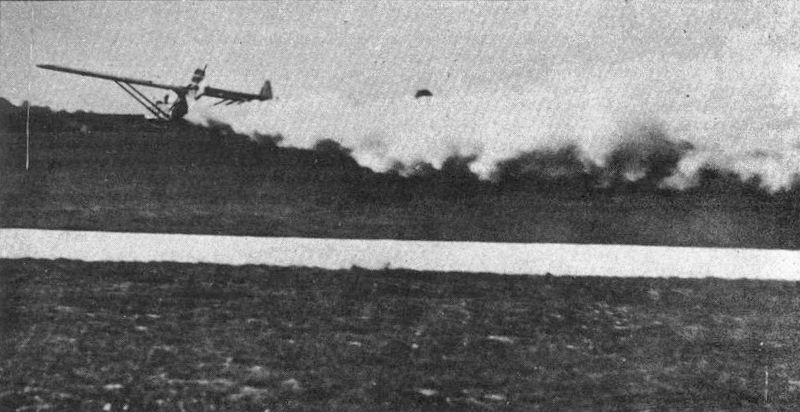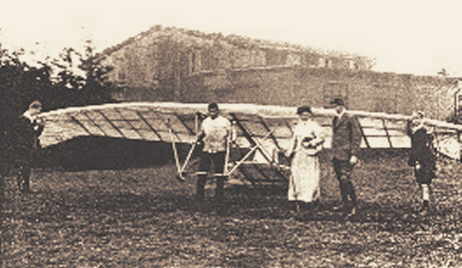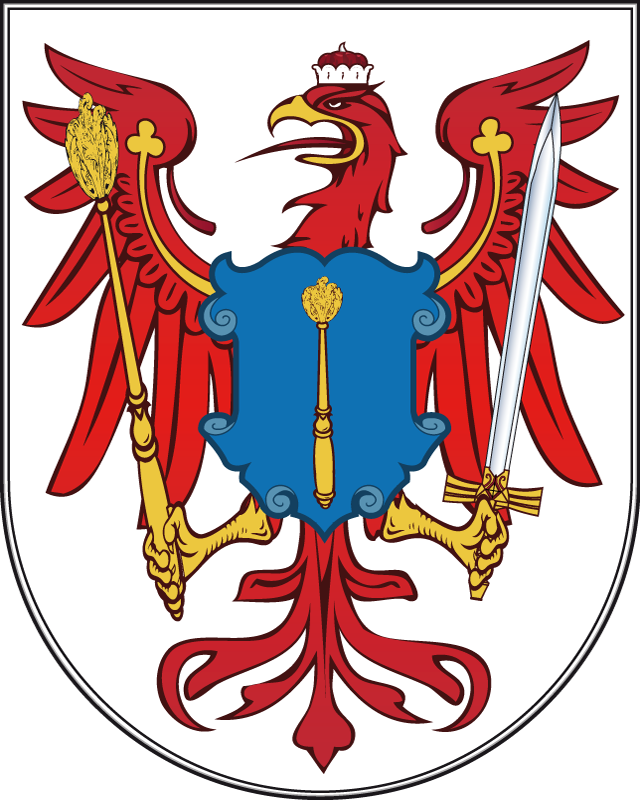|
Alexander Lippisch
Alexander Martin Lippisch (2 November 1894 – 11 February 1976) was a German aeronautical engineer, a pioneer of aerodynamics who made important contributions to the understanding of tailless aircraft, delta wings and the ground effect in aircraft, ground effect, and also worked in the U.S. Within the Opel-RAK program, he was the designer of the world's first rocket-powered glider. He developed and conceptualized delta wing designs which functioned practically in supersonic delta wing fighter aircraft as well as in hang gliders. People he worked with continued the development of the delta wing and supersonic flight concepts over the 20th century. His most famous designs are the Messerschmitt Me 163 rocket-powered interceptorHanna Reitsch, Reitsch, H., 1955The Sky My Kingdom London: Biddles Limited, Guildford and King's Lynn, and the Dornier Aerodyne. Early life Lippisch was born in Munich, Kingdom of Bavaria. He later recalled that his interest in aviation began with a demonst ... [...More Info...] [...Related Items...] OR: [Wikipedia] [Google] [Baidu] [Amazon] |
RRG Storch V
The RRG Storch V was the only member of Alexander Lippisch's Storch series of tailless aircraft to be powered. It flew successfully in the year 1929. Design and development Before the Storch V, Lippisch had designed only glider (sailplane), gliders, many of them tailless. The first of these, the Espenlaub E.2, was built by Espenlaub in 1922 but Lippisch, at Rhön-Rossitten Gesellschaft, RRG from 1925, did not return to the tailless layout until 1927. Development progressed with a series of the Storch models; with the Storch IV he achieved a fully controllable aircraft which flew well. The Storch V was essentially the Storch IV with a small pusher configuration engine added behind the pilot. The Storch V had a straight edged wing with about 17° of sweep on the leading edge and with only slight taper and Dihedral (aeronautics), dihedral. It was built around a plywood skinned D-box leading edge spar (aeronautics), spar and a second spar near mid-chord (aeronautics), chord and w ... [...More Info...] [...Related Items...] OR: [Wikipedia] [Google] [Baidu] [Amazon] |
Dornier Aerodyne
The Dornier Aerodyne (also referred to as "Lippisch-Dornier Aerodyne"KRISTINA KIRKLIAUSKAITE,Lippisch-Dornier Aerodyne: Wingless and tailless aircraft, ''Aerotime,'' retrieved 19 March 2021.) was a wingless VTOL unmanned aircraft. Conceived by Alexander Lippisch, it was developed and built by Dornier on behalf of the Federal German Ministry of Defence (BMVg). Lippisch was part of the team. The first flight took place on 18 September 1972. The development ended on 30 November 1972 after successful hovering-flight testing with the aircraft. Experimentation did not continue due to lack of interest by the ''Bundeswehr'' (German Armed Forces). Description The principle behind the Aerodyne is the combination of lift and thrust production in a single construction unit and flow channel, i.e. a ducted fan In aeronautics, a ducted fan is a thrust-generating mechanical fan or Propeller (aeronautics), propeller mounted within a cylindrical wiktionary:duct, duct or shroud. Other terms incl ... [...More Info...] [...Related Items...] OR: [Wikipedia] [Google] [Baidu] [Amazon] |
Max Valier
Max Valier (9 February 1895 – 17 May 1930) was an Austrian rocketry pioneer. He was a leading figure in the world's first large-scale rocket program, Opel-RAK, and helped found the German ''Verein für Raumschiffahrt'' (VfR – "Spaceflight Society") that would bring together many of the minds that would later make spaceflight a reality in the 20th century. Biography Valier was born in Bozen in the County of Tyrol (now South Tyrol) and in 1913 enrolled to study physics at the University of Innsbruck. He also trained as a machinist at a nearby factory. His studies were interrupted by the First World War, during which he served in the Austro-Hungarian army's air corps as an aerial observer. After the war, Valier did not return to his studies, but became a freelance science writer. In 1923, he read Hermann Oberth's landmark book '' Die Rakete zu den Planetenräumen'' (''The Rocket into Interplanetary Space'') and was inspired to write a similar work to explain Oberth's ideas ... [...More Info...] [...Related Items...] OR: [Wikipedia] [Google] [Baidu] [Amazon] |
Fritz Von Opel
Fritz Adam Hermann von Opel (4 May 1899 – 8 April 1971), known as Fritz Adam Hermann Opel until his father was ennobled in 1917, was the only son of Wilhelm von Opel and a grandson of Adam Opel, founder of the Opel company. He is remembered mostly for his Opel RAK demonstrations of the world's first crewed rocket-powered ground and air vehicles that earned him the nickname "Rocket Fritz" and which were also highly effective as publicity stunts for his family's automotive business. Life and career Opel was born in Rüsselsheim. He studied at the Technische Universität Darmstadt and received his doctorate from the university. After graduation, he was made director of testing for the Opel company and also put in charge of publicity. Fritz von Opel was a grandson of Adam Opel and son of Wilhelm von Opel. His sister was Elinor von Opel, a cousin Georg von Opel. When his father Wilhelm was raised to hereditary nobility in 1917, his descendants were also ennobled. In 1929 he ma ... [...More Info...] [...Related Items...] OR: [Wikipedia] [Google] [Baidu] [Amazon] |
Lippisch Fafnir
The RRG Fafnir, named after the legendary dragon, was a single seat German high performance glider designed by Alexander Lippisch. It won the Rhön competition in 1931 and made several outstanding flights as well as setting a fashion for gull wings. Design and development Lippisch began the design of the influential Fafnir in 1929. Its refined design proved difficult to construct and the aircraft was only just ready for flight tests at the start of the 1930 Rhön competition on the Wasserkuppe. The Fafnir was not the first glider with a cantilever wing, for the Darmstadt Konsul had been built seven years earlier but a cantilever wing with an aspect ratio of almost 20 was exceptional. The single wing spar had to be deep for strength and Lippisch accommodated this by using the Göttingen 652 airfoil which is thick and strongly cambered, additionally providing lift at low speeds. The wing root was faired into the upper fuselage. The wing was straight tapered in plan to ell ... [...More Info...] [...Related Items...] OR: [Wikipedia] [Google] [Baidu] [Amazon] |
Lippisch Wien
The Lippisch Wien was a high-performance glider designed by Alexander Lippisch in Germany in 1929. Owned and flown by Robert Kronfeld, it was one of the first sailplanes intended to exploit thermals. It set world records both for distance and altitude and demonstrated the practicality of long-distance cross-country flights. Design and development Robert Kronfeld was the overall winner of the 1928 Rhön Gliding Competition flying the RRG (Rhon-Rossitten-Gesellschaft) Professor. To remain competitive with the latest designs coming from the German universities, he asked Alexander Lippisch, the Professor's designer, for an improved version with better performance and handling. Lippisch's response was an elegant sailplane that Kronfeld named Wien after his home town. The Wien kept the layout of the Professor, with pylon-mounted single-spar wings braced with faired struts, but the span was increased by , raising the aspect ratio from 14 to 19.6. The fuselage was redesigned to have a ... [...More Info...] [...Related Items...] OR: [Wikipedia] [Google] [Baidu] [Amazon] |
Rhön-Rossitten Gesellschaft
The Rhön-Rossitten Gesellschaft (RRG) or Rhön-Rossitten Society was a German gliding organization, the first one in the world that was officially recognised. The Rhön-Rossitten Gesellschaft was mainly responsible for establishing gliding as a sport, not only in Germany but eventually throughout the world. Because the Treaty of Versailles forbade any form of powered flight in Germany, many young pilots and aircraft designers turned to gliding as a sport. Under Oskar UrsinusReitsch, H., 1955, The Sky My Kingdom, London: Biddles Limited, Guildford and King's Lynn, and Theodore von Kármán, hobbyists and serious university study groups began building gliders. The first contest was held in 1920 on the mountain of the Wasserkuppe in the Rhön region of Hesse. While many of the entering designs were no more than kites and many of the 'flights' were no more than stumbles ending in a crash, Kármán and his team from the RWTH Aachen with their glider ''Schwarzer Teufel'' (Black Devil) ... [...More Info...] [...Related Items...] OR: [Wikipedia] [Google] [Baidu] [Amazon] |
Espenlaub E-2
Gottlob Espenlaub (25 October 1900 – 9 January 1972), nicknamed Espe, was an inventor who specialized in early types of aircraft, specifically gliders and rocket propulsion systems designed for them. He invented a number of different aircraft, focusing on tailless designs. Espenlaub co-founded the practice of aerotowing. Aeronautic career Espenlaub was born in Balzholz, since 1938 part of Beuren. As a young man Espenlaub served as a joiner to aircraft builders. He helped Alexander Lippisch to build a style of glider in 1921 according to Lippisch's designs. The glider was subsequently dubbed the Lippisch-Espenlaub E-2 glider, due to Espenlaub's participation in its creation. Espenlaub began building his own rocket propelled gliders in 1928, conducting his first rocket test on October 22, 1929. His rocket glider for this test was dubbed the RAK-3 and it featured missiles attached to the wings. During the flight, these missiles caught the tail on fire, forcing an early la ... [...More Info...] [...Related Items...] OR: [Wikipedia] [Google] [Baidu] [Amazon] |
Luftschiffbau Zeppelin
Luftschiffbau Zeppelin GmbH is a German aircraft manufacturing company. It is perhaps best known for its leading role in the design and manufacture of rigid airships, commonly referred to as ''Zeppelin, Zeppelins'' due to the company's prominence. The name 'Luftschiffbau' is a German word meaning ''building of airships''. The company was founded by Count Ferdinand von Zeppelin in 1908 as a formal entity to continue advancing his pioneering research into rigid airships. ''Luftschiffbau Zeppelin'' became the leading manufacturer in the field of large lighter-than-air vehicles; its products were used in both military and civilian capacities. The firm founded DELAG, the List of airlines by foundation, world's first airline to use an aircraft in revenue service, in 1909 on the back of public interest and using its own airships. During the First World War, Zeppelins were employed as the first German strategic bombing during World War I, long distance strategic bombers, launching numerou ... [...More Info...] [...Related Items...] OR: [Wikipedia] [Google] [Baidu] [Amazon] |
World War I
World War I or the First World War (28 July 1914 – 11 November 1918), also known as the Great War, was a World war, global conflict between two coalitions: the Allies of World War I, Allies (or Entente) and the Central Powers. Fighting took place mainly in European theatre of World War I, Europe and the Middle Eastern theatre of World War I, Middle East, as well as in parts of African theatre of World War I, Africa and the Asian and Pacific theatre of World War I, Asia-Pacific, and in Europe was characterised by trench warfare; the widespread use of Artillery of World War I, artillery, machine guns, and Chemical weapons in World War I, chemical weapons (gas); and the introductions of Tanks in World War I, tanks and Aviation in World War I, aircraft. World War I was one of the List of wars by death toll, deadliest conflicts in history, resulting in an estimated World War I casualties, 10 million military dead and more than 20 million wounded, plus some 10 million civilian de ... [...More Info...] [...Related Items...] OR: [Wikipedia] [Google] [Baidu] [Amazon] |
Berlin
Berlin ( ; ) is the Capital of Germany, capital and largest city of Germany, by both area and List of cities in Germany by population, population. With 3.7 million inhabitants, it has the List of cities in the European Union by population within city limits, highest population within its city limits of any city in the European Union. The city is also one of the states of Germany, being the List of German states by area, third smallest state in the country by area. Berlin is surrounded by the state of Brandenburg, and Brandenburg's capital Potsdam is nearby. The urban area of Berlin has a population of over 4.6 million and is therefore the most populous urban area in Germany. The Berlin/Brandenburg Metropolitan Region, Berlin-Brandenburg capital region has around 6.2 million inhabitants and is Germany's second-largest metropolitan region after the Rhine-Ruhr region, as well as the List of EU metropolitan areas by GDP, fifth-biggest metropolitan region by GDP in the European Union. ... [...More Info...] [...Related Items...] OR: [Wikipedia] [Google] [Baidu] [Amazon] |





